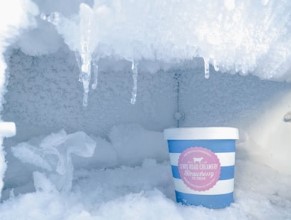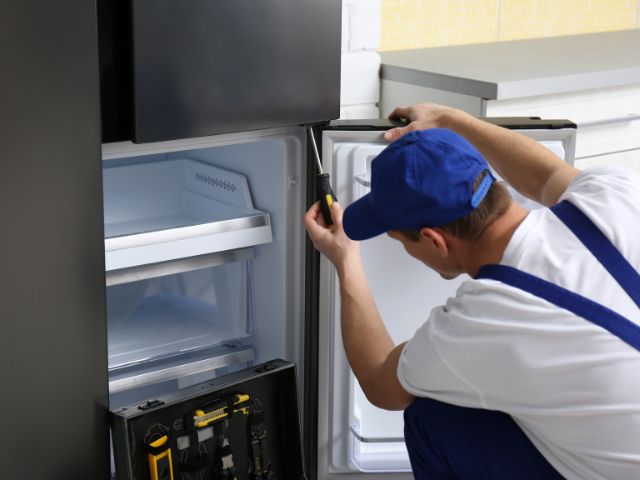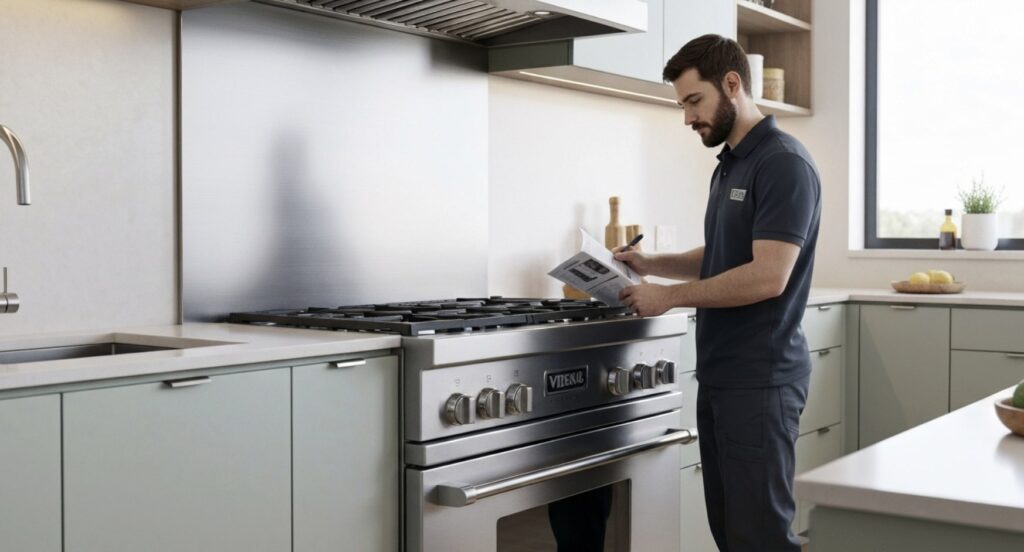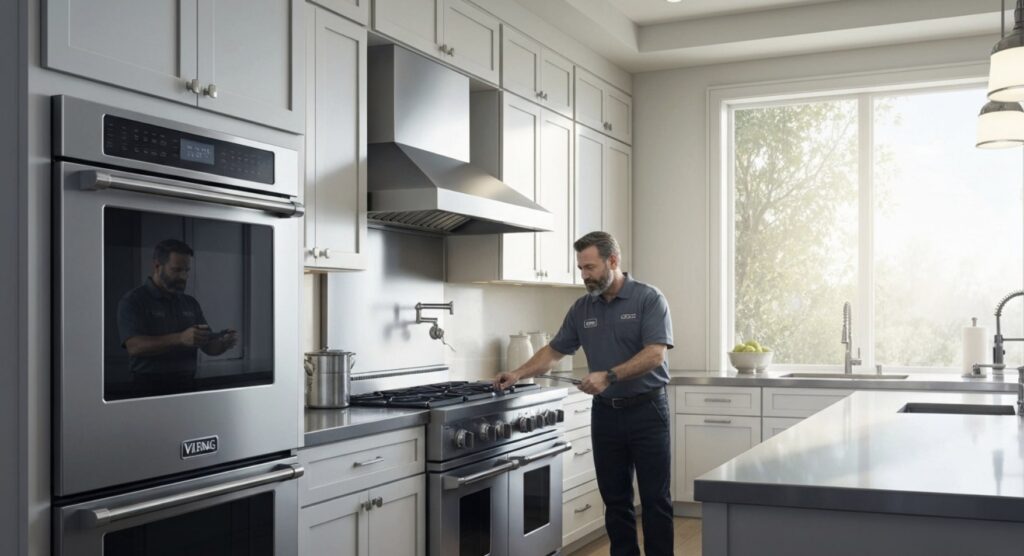Ever had the annoying experience of finding your Viking freezer all frosty? It’s not just a hassle; it can mess with how well your freezer works, cause bad smells, lead to food getting ruined (freezer burn), and even harm your fridge. But don’t worry, there are ways to stop this from happening by keeping up with some maintenance and taking steps to prevent it.
In our blog today, we’re going to look at why and how to prevent frost buildup in freezers. Whether you have a Viking freezer or any other brand, these tips will help you keep your appliance in top condition. From checking the door seal to regulating the temperature, we’ll walk you through all the necessary steps to ensure that frost buildup becomes a thing of the past for you. Stay tuned for our expert advice on when to call professional’s help!
Key Factors Contributing to Frost Buildup
Having a freezer can be a convenient way to store food for a longer time and preserve its freshness. However, with the benefits come certain challenges, such as frost buildup. This can impact the efficiency of your freezer and lead to various issues over time. Here are the following factors that can contribute to frost buildup in your Viking freezer:
1. Door Seal: A damaged or improperly sealed door can allow warm air to enter the freezer, leading to frost buildup.
2. Temperature Fluctuations: Frequent temperature changes inside the freezer can cause moisture in the air to freeze and form frost.
3. Overloading: Packing your freezer too full restricts airflow, creating pockets of cold and warm air that contribute to frost buildup.
4. Defrost System Issues: Malfunctioning defrost systems can result in excess ice formation.
5. Humidity Levels: High humidity levels in the surrounding environment can also contribute to frost buildup in your freezer.
Tips to Prevent Frost Buildup in Viking Freezers
To keep your Viking freezer working well and free from frost, it’s important to follow a few simple steps.
Check the temperature
To keep frost from building up in your Viking freezer, it’s key to regularly check and make sure it’s set at the right temperature. By keeping your freezer at 0 degrees Fahrenheit (-18 degrees Celsius), you’re hitting that sweet spot where food stays frozen but you don’t get a lot of unwanted ice forming. To stay on top of this, using a dependable appliance thermometer can help you watch the temperature closely. If things start looking off or if the temperature doesn’t stay steady, this could mean there’s an issue with how your freezer is cooling down stuff. When that happens, getting in touch with someone skilled in fixing appliances is a smart move.
Clean your freezer regularly
Making sure you clean your freezer often is key to stopping frost from building up. When bits of food or any liquids that spill inside freeze, they can turn into ice and cause problems for your freezer. Here’s how you can keep it clean:
- Take out all the food items and put them in a cooler so they stay cold while you’re cleaning.
- Before anything else, unplug the appliance to make sure you don’t get shocked.
- To let the ice melt on its own, just leave the door of the freezer open.
- After all the ice has melted away, grab some warm water mixed with either dish soap or baking soda to wipe down inside.
- Then rinse everything off with plain water and dry it well so no new frost starts forming.
- -With a brush or vacuum attachment handy, give those condenser coils at back a good cleanup to get rid of dust and other stuff stuck there.
And remember not to use anything sharp or too rough when cleaning because this could hurt both interior surfaces like around where freezer door closes (the door seal) as well as outside parts.
Check the freezer drain
To keep your Viking freezer working well and stop frost from building up, it’s really important to check the freezer drain now and then. If this drain gets blocked, water can’t flow out like it should. This leads to too much moisture inside, which is how you end up with frost all over everything. Just make sure there’s nothing blocking that drain so water can get through easily. Doing this small thing makes a big difference in how well your freezer works by keeping the air moving as it should and stopping extra moisture from causing problems like frost buildup. So, taking a little time to look at the drain every once in while means you won’t have to worry about scraping off loads of ice later on.
Check the door gasket
When your freezer gets frosty, check the door gasket – the rubber seal that keeps it airtight. Cracks or poor fit can let in warm, moist air that causes ice buildup. Regularly inspect for wear and tear like cracks or tears to prevent excess frost. Ensure the gasket is aligned correctly to avoid drafts. Give your freezer space for proper airflow to prevent icy buildup and maintain even temperatures.
Check your freezer isn’t overloaded
Freezers can develop frost if overcrowded, hindering proper air circulation. To prevent this, avoid overpacking to allow cold air to flow evenly. Use containers for efficient use of space and easier access. Regularly declutter to maintain organization and prevent overload in your freezer, ensuring airflow and preventing frost buildup.
Don’t put warm food into a freezer
Putting warm or hot food directly into the freezer can cause frost buildup. The warmth from the food turns into steam and releases moisture, which freezes on cold surfaces, creating frost. To prevent this, cool your food to room temperature before freezing. Ensure containers are tightly sealed and dry to minimize moisture and frost buildup in your freezer. By following these steps, you can maintain a frost-free Viking freezer with properly frozen items.
Don’t open the freezer door too often
Every time you open the freezer door, warm, humid air enters, causing cold air to escape and turn into frost. To prevent frost buildup, minimize opening the door and grab items all at once. Keeping the door closed maintains a steady temperature and reduces frost. Remember to promptly close the door after use to avoid excess warm air entering. These steps will help prevent frost in your Viking freezer.
When To Call a Professional
Even after trying all the tips mentioned before, if your Viking freezer is still getting frosty, it might be time to get some expert help. A skilled appliance technician like Viking Appliance Repair Pros knows exactly how to figure out and fix whatever’s causing the frost buildup.
With our know-how, we’ll take a close look at the door gasket and check for any parts that aren’t working right to make sure everything in your freezer is running smoothly. We’re also good at fixing problems with the defrost system, which plays a big part in keeping ice from building up.
So if you can’t seem to beat the frost issue by yourself, don’t think twice about calling Viking Appliance Repair Pros. Getting an experienced technician on board can really make a difference in making sure your Viking freezer works like it should and keeps future ice buildups away.
Conclusion
To keep your Viking freezer working its best, it’s important to stop frost from building up. You can do this by doing a few easy things like everything stated here in this comprehensive “how to prevent frost buildup in freezer” guide. If you still have trouble with frost after trying these tips, you might need to get some help from us. Taking care of any frost issues quickly will help your freezer last longer and avoid expensive fixes down the line. For more advice on taking care of appliances, such as with your dishwasher, our blog, “Quick and Easy Viking Dishwasher Maintenance Hacks,” has a detailed guide on looking after your appliance to ensure it last longer.
Frequently Asked Questions
How often should I defrost my Viking freezer?
Viking freezers should be defrosted based on frost buildup and the freezer model. Ideally, defrost when frost is about a quarter-inch thick to maintain efficiency.
Can I prevent frost buildup without using chemicals?
To prevent frost buildup in your Viking freezer naturally, check the door seal for cracks, avoid overpacking, and reduce door openings to maintain low humidity levels inside.
What are the signs that my freezer needs defrosting?
If you notice ice crystals or frost in your Viking freezer, it’s time to defrost. Reduced cooling efficiency, longer cooling times, and difficulty closing the door due to ice buildup are clear indicators. Defrosting is essential to maintain optimal performance.
Is it safe to store food during the defrosting process?
To keep food safe while thawing, transfer it to a cooler or insulated bag to prevent bacteria growth. If perishable items have thawed completely, consume them promptly or discard to avoid illness.
How can I improve the efficiency of my Viking freezer to prevent future frost buildup?
To keep your Viking freezer running smoothly and prevent frost buildup, clean the condenser coils regularly to remove dust and obstructions. Ensure vents are clear for proper airflow, follow recommended temperature settings, and avoid overpacking to optimize performance and reduce frost accumulation.







